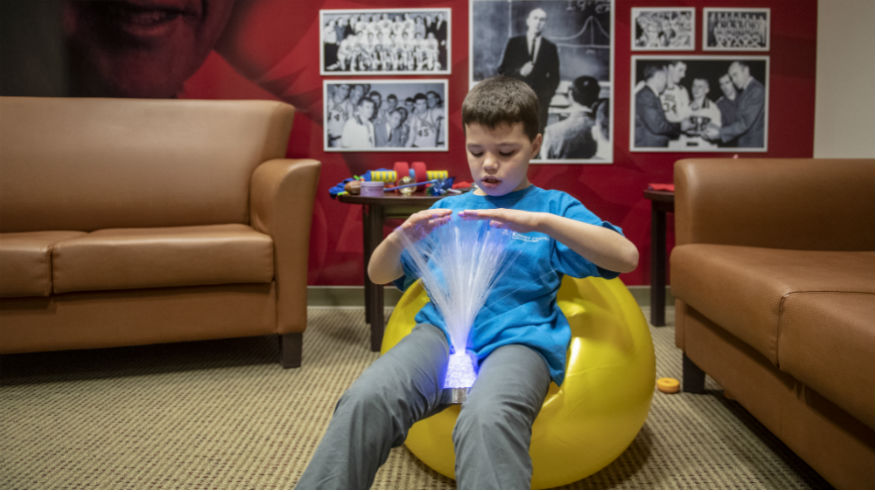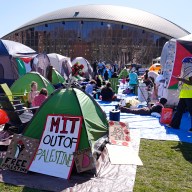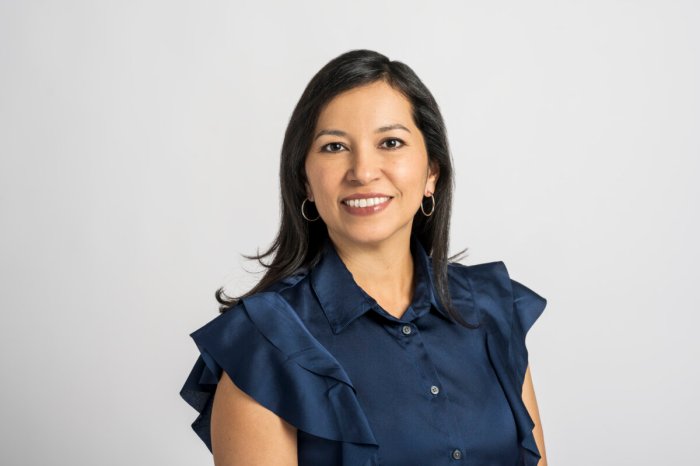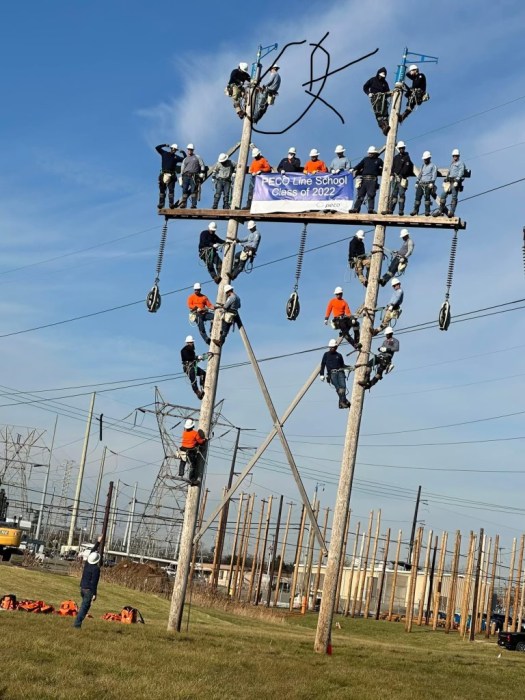On Sunday, Dec. 2, Philly college basketball fans filled the Hagan Arena to watch the Saint Joseph’s University Hawks tip off against the Villanova Wildcats. While the game was a narrow loss for the Hawks, the university had what may have been a huge victory that could change the way large sporting events on a national level. Saint Joseph’s is the only school in the country to introduce autism break rooms to their sporting events so that fans of all ages who live with Autism Spectrum Disorder (ASD) can enjoy on their own level.
Autism break rooms are changing the game

Photo Credit: Saint Joseph’s University
The first of these autism break rooms was designed and is staffed by experts at the university’s nationally recognized Kinney Center who has also trained volunteers known as “game-day leaders” on how they can best support families who need to take advantage of the room’s services. The break room has been stocked with “sensory-friendly items” such as stress balls, bean bag chairs, bounce boards, weighted blankets, noise-canceling headphones, and more. This room will be a perfect place for Hawks fans to go and take a breather all while enjoying the game up close.
According to Joseph McCleery, Ph.D., executive director of academic programs at The Kinney Center for Autism, providing a space of inclusion for fans on the spectrum can be one of the most effective ways to peak the interests of sports fans with ASD and to help them have a healthier relationship with sports and physical activity.
“What is interesting about this is that people on the spectrum are people,” says Dr. McCleery. “They’re varied quite a bit… Just like other people, there are some people on the spectrum who are interested and others who are less interested. For those people on the spectrum who are more interested in sports, whether it’s playing or just being a superfan and observing, they might still shy away from the games. So our break room is not just for children on the spectrum, it is for adults on the spectrum as well.”
As it turned out, the inaugural game day for Saint Joseph’s first of many autism break rooms was a huge success with ten people using the room for about 10-15 minutes at a time and with many people returning a couple of times during the game. Dr. McCleery views this as such a success in that each of these fans was able to return to the game once they had calmed down from the sensory spectacle of the event, as normally the alternative would be to leave the arena.
By providing an environment of inclusion at sporting events, people with ASD will also build more confidence to try to engage in physical activity and exercise after witnessing what goes on on the court in between plays and half-time. By introducing this new sense of obtainability into their lives, Dr. McCleery has found that it can do wonders towards the treatment of people who are on the spectrum.
“We find that if you do the right activity, for example, if you don’t focus on competition and winning and you focus more on participation and enjoyment, people on the spectrum are more willing to engage in those actions,” explains Dr. McCleery. “Similarly, instead of a teacher telling someone what to do, actually running with them or playing soccer with them is a great way to help motivate people on the spectrum. Just like anyone, you don’t necessarily just want to be told what to do. You want them to speak with their actions. Having good models is really important for everyone and if people on the spectrum can’t go to these games, then they won’t have those models.”


















